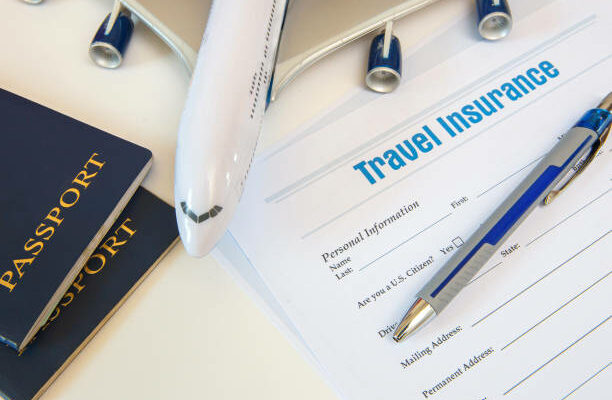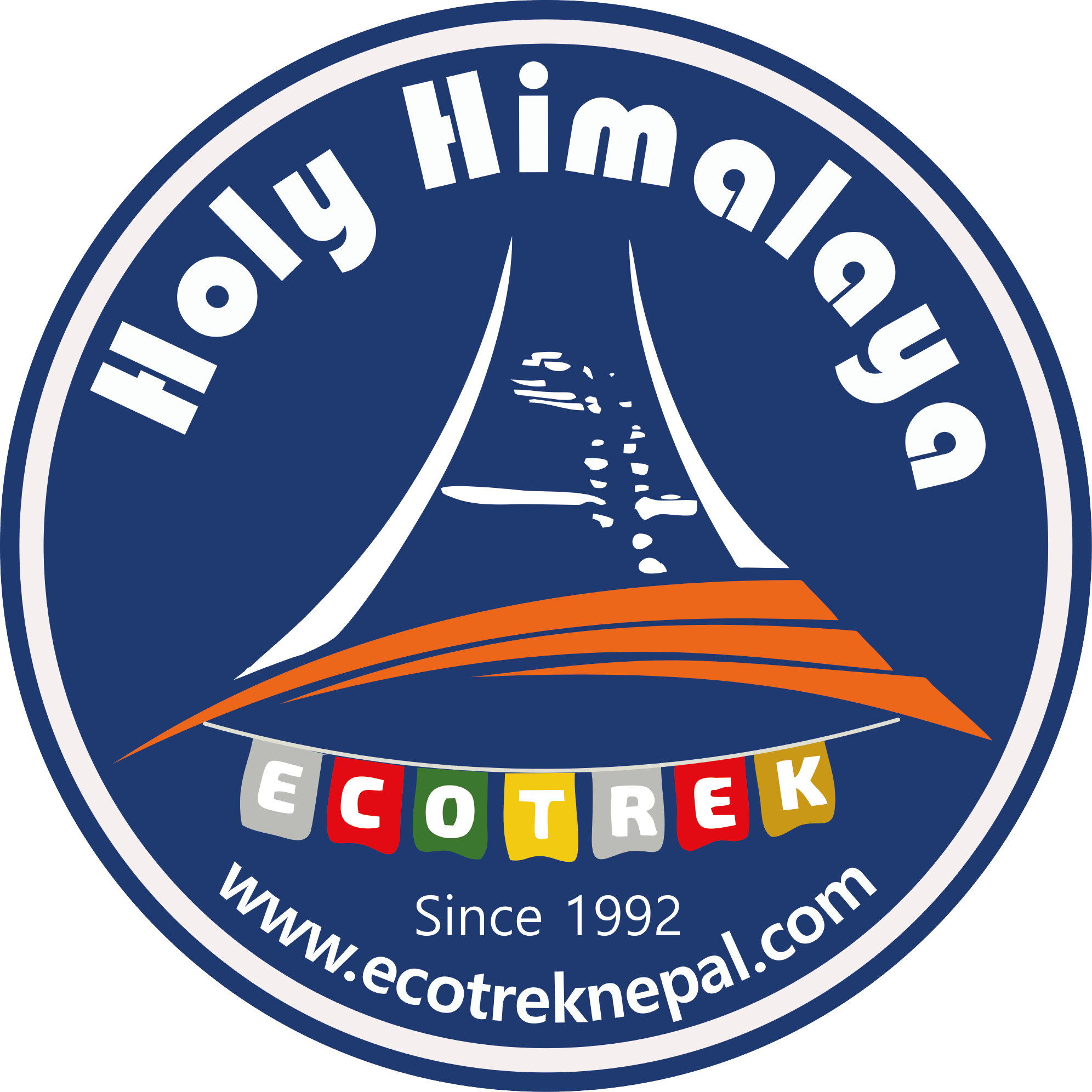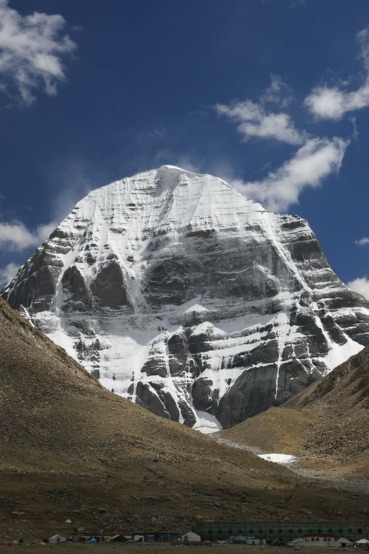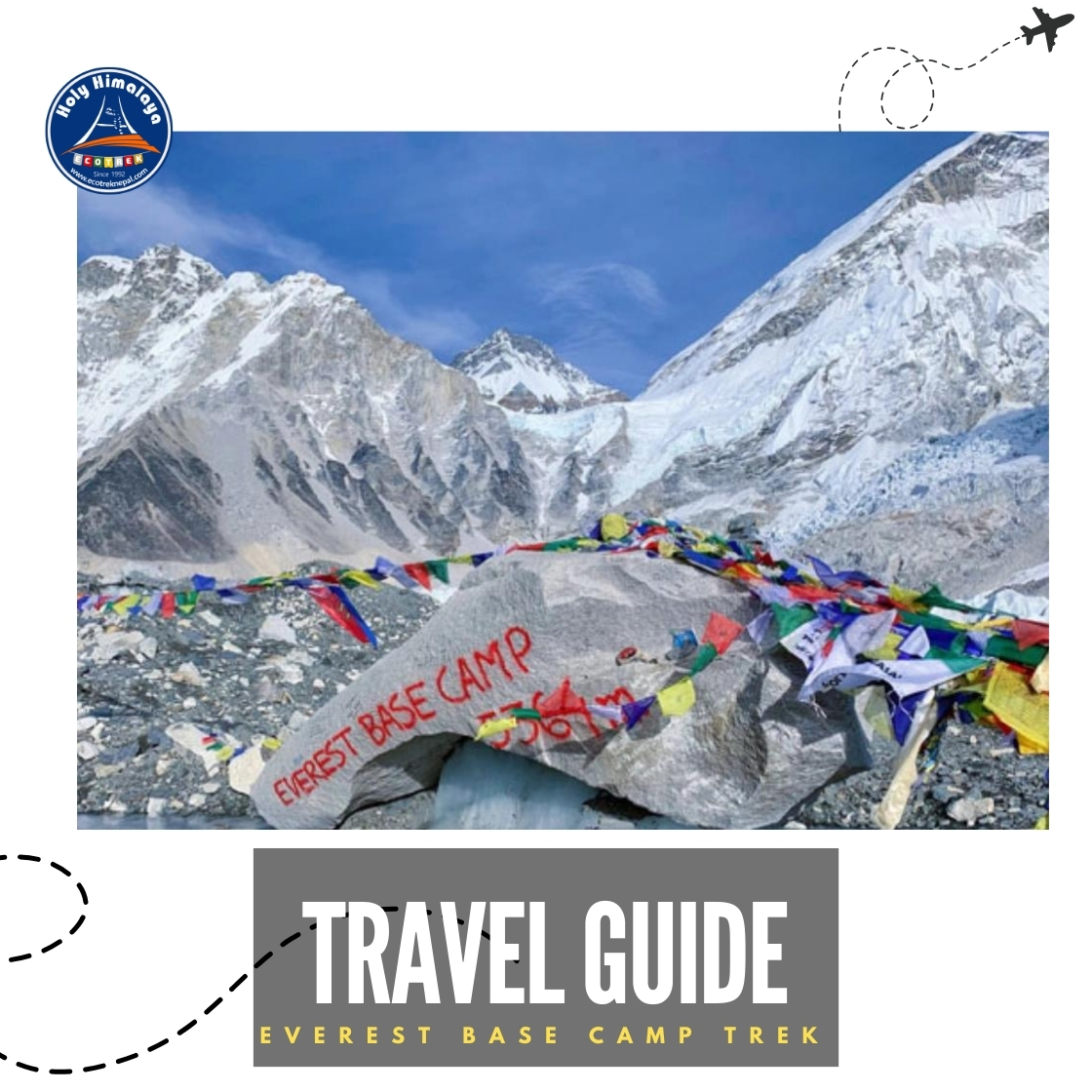Kanchenjunga region is a stunning area in the eastern part of Nepal, sharing borders with India and Tibet. Mount Kanchenjunga, the world’s third highest peak with the height of 8,586 m. stands as the major attraction of the region. Kanchenjunge in English is aptly translated as The Five Treasures of the High Snow because the summit has five significant peaks, namely Kanchenjunga Main (8,586m.), Kanchenjunga West which is Yalung Kang (8,505m.), Kanchenjunga South (8,494m.), Kanchenjunga Central (8,482m.), and Kangbachen (7,903m.). These majestic mountains alps define the area’s unique charm and the untouched beauty. The Kanchenjunga region spans around the area of 2,035m. and was designated as a conservation area in 1998 to preserve its natural landscapes and vibrant cultural palate. The Kanchenjunga trek is labeled as one of Nepal’s most adventurous and demanding treks that uncovers the lush tropical jungles, rhododendron forests, and high altitude glaciated base camps, offering memorable experiences with the off-the-beaten journey and raw beauty of Nepal.
Kanchenjunga region homes various ethnic communities of Nepali like the Sherpa, Rai, Tamang and Lamas. These communities have their own authentic cultures and traditions including their own festivals, dances, rituals and daily routines. Apart from cultures and traditions, the Kanchenjunga region also showcases a diverse ecosystem, homing endangered species of animals such as the elusive snow leopard, musk deer, Himalayan black bear, and red panda. This region is also a global hotspot for floras. Total of 23 species of rhododendron are found in this region. The landscape of this region is complex with three different ecosystems: coniferous forests, Himalayan alpine shrubs, and the savanna.
It takes between 20 to 25 days to complete the entire trek including the acclimatization days in the mountains. Trekking in the Kanchenjunga region isn’t very easy, but don’t let its difficulty defeat you. There are no age restrictions for this trek. Trekkers from 6 years old to 75 years have successfully completed this trek. This may not be the best choice for the first-time trekkers, but if you are a seasoned trekker, it is a not to miss trek in Nepal.
Types of treks in the Kanchenjunga Region
The Kanchenjunga region is huge, with lots of natural beauty and yet to be explored trails. There are three types of well-mapped trails in this region which are:
1. Kanchenjunga North Base Camp Trek
The trek to the north base camp of Kanchenjunga is the most remote and very les crowded. This trek offers a very peaceful, unique and authentic trekking experience. This trek includes passing high mountain passes - the Sele le Pass at the elevation of 4,290m. and Sinion La Pass at the altitude of 4,660m. with the stunning views of the Kanchenjunga range, along with other mountain peaks like Everest, Lhotse and Makalu. The Kanchenjunga North Base Camp trek takes between 16 to 20 days to complete, with very beautiful experiences.
2. Kanchenjunga South Base Camp Trek
The Kanchenjunga South Base Camp Trek is relatively less challenging and easier in comparison to north base camp trek. It is a popular choice for the Kanchenjunga trek, and is suitable for all level of trekkers. You will go through the beautiful rhododendron forests, traditional local villages and get to see the breathtaking views of the Kanchenjunga range and other peaks like Jannu and Makalu. This trek takes about 16 to 20 days to complete.
3. Kanchenjunga Circuit Trek
Kanchenjunga Circuit trek is the most popular trek in this region. It is one of the most fulfilling treks in Nepal that takes you through the remote and untouched beauty of Kanchenjunga region. The circuit trek covers both the north and south base camps allowing you to explore a larger are and witness the stunning floras and faunas and the mountain ranges. This is a the most strenuous trek among the three, which requires trekking at high altitude and crossing several high mountain passes.
Best Seasons
The best seasons for trekking in the Kanchenjunga region are during the peak seasons of spring and autumn, which are March to May and September to November. The weather in the spring seasons is generally dry and warm with moderate temperature of 2 degrees Celsius to 18 degrees Celsius with lots of colorful rhododendron blooming and making the hills look like a flower bouquet.
Similarly, the temperature in the autumn starts from 11 degrees Celsius to 19 degrees Celsius making it mild and the perfect time to trek in Kanchenjunga region with clear skies and amazing views of the snow-capped mountains.
The monsoon season (June to August) in the Kanchenjunga region experience heavy rainfall making trekking more challenging and dangerous because of floods and landslides. The weather is wet and mild cold with the moderate temperature between 11 to 20 degrees Celsius.
During the winter months, from December to February, the temperature significantly drops up to -9 degrees Celsius in the day itself. The Kanchenjunga region experiences heavy snowfall and snowstorms making this trekking very dangerous and most difficult. Trekking can still be done with proper training, equipment, and planning, yet it is best to avoid it in this season.
Trekking during summer and winter is not recommended because it has its own set of unique challenger and difficulties, but the pros are that there is lesser crowd in the trail, with amazing snowfall views and experiences.
Transportation Options
The starting point of any of the Kanchenjunga sregion trekking is Taplejung. There are several means of transportations till Taplejung, depending on your preference and budget.
1. Flight
As the trek starts from Taplejung, you can go on a flight from Kathmandu to Bhadrapur which will be 40 minutes long. After landing at Bhadrapur, you’ll have to drive from there to Taplejung in a jeep or a bus which will take around 9 hours. This is the most used method for Kanchenjunga trek because it’s the faster and most comfortable, and it offers a spectacular bird-eye view of the Himalayan region.
2. Road
Another way to reach to the base of the trek is by road. You can take a public bus or hire a private jeep or bus from Kathmandu. This is the most affordable option but is time consuming, exhausting and rough. Though lengthy, the bus ride will be very scenic with the amazing views of lush forests, small Nepali villages, and bumpy experience of the roads.
3. Helicopter
You can also go till Taplejung in a helicopter from Kathmandu. It is a more luxurious, quicker, and comfortable option, but also the most expensive one. The helicopter ride to Taplejung is very stunning, where you can witness Himalayan ranges, lush hills and Terai plains in a single frame.

Trekking Permits and Documents
There are two types of permits required for the trekking in the Kanchenjunga region. You must apply for the permits from the Nepal Government and follow all the rules and regulations about trekking in the region. The two permits are:
1. Kanchenjunga Conservation Area Permit (KCAP)
The Kanchenjunga Conservation Area spans over an area of 2,035 sq. km. and is managed and regulated by the Kanchenjunga Conservation Area Management Council (KCAMC). The region homes endanger species of animals like Snow Leopard, Red Panda, and Musk deer, and diverse floras. The Kanchenjunga Conservation Area Permit (KCAP) allows visitors to enter the area and trek inside the region.
This permit can be obtained from the Nepal Tourism Board in Kathmandu, or at the Kanchenjunga Conservation Area Project office in Taplejung.
Kanchenjunga Conservation Area Permit Cost
The fee for Nepali citizen is NPR 100 per person.
The fee for SAARC nationals in NPR 500 per person (approx. USD 5).
The fee for other nationals is NPR 2,000 per person (approx. USD 20).

2. Restricted Area Permit (RAP)
Restricted Area Permits are the special permits that are required to trek in the areas that fall under the restricted regions of Nepal. The four Village Development Committees of Yamphusing, Lelep, Paping and Olangchung Gola in the Taplejung districts fall into the restricted region and requires Restricted Area Permit to trek in the region.
The permit can be obtained only through a licensed trekking agency in Nepal, and its compulsory to hire a registered guide or a porter for the entire duration of the trek.
Restricted Area Permit Cost
The cost of the Kanchenjunga Restricted Area Permit depends on the duration of the stay in the region. The first four weeks will cost USD 20 per person per week, and beyond the first four weeks, it will cost you USD 25 per person per week.
Documents Required for Kanchenjunga Trek Permit
1. Valid passport with at least 6 months remaining validity and a valid Nepal Visa extending past the expiry date of RAP.
2. 2 Passport sized photos for KCAP
3. E-copy of the passport sized photo to be uploaded for Kanchenjunga RAP’s online form.

Accommodation
There are two popular options for accommodation for the trekkers in the Kanchenjunga region. The first one is at tea houses and lodges. The tea houses or lodges have the basic facilities for spending the night with shared or single rooms after a day-long trek. Some teahouses have attached bathrooms and European standard commode, while others have shared bathrooms with squad commodes. The lodges and guest houses also provide meals.
Another option is camping. There are a lot of wonderful spots in the Kanchenjunga region to set up you camp and rest for the night. You can set up your camp in the yak grazing grounds in the lap of world’s third highest peak enjoying the mountain vistas. You can cook for yourself or eat in the tea houses and use other facilities like showering, washroom, charging, etc. if you are camping.
Foods and drinks
The Kanchenjunga being a remote area doesn’t have a very elongated menu. The basic foods you will be serves are Dal Bhat, which is a Nepali food consisting of rice, lentils, and vegetables, Momo, Thukpa which is a noodle dish with soup broth and vegetables and meat, Chapati (flatbread, served with curry or vegetables) and very few local cuisines like yak meats. It is essential that you have a balanced diet that provides enough energy for your journey. The foods are found in both vegetarian and non-vegetarian options, and price for the non-vegetarian foods cost slightly more than vegetarian foods.
A meal generally costs NPR 600 to NPR 1200 depending on your food choices in the Kanchenjunga region.
You can find both hot and cold drinks throughout the Kanchenjunga trail. You can enjoy teas (black tea, milk tea, green tea), coffee (black/milk coffee), hot chocolates, cold drinks (coke, Fanta, Pepsi etc.) and the price for the drink varies from NPR 250 to NPR 450 depending on the drink.
You can’t find bottled water as you ascend in the elevation. You can either consume boiled water, for which you’ll have to pay extra, or carry water purification tablets or a filtering system to ensure safe drinking water.
It is recommended that you carry snacks and energy bars so that you can munch when trekking and fuel your energy.

Telephone, Internet and Electricity
Electricity, internet and telephone connectivity isn’t widely available in the Kanchenjunga region. Some tea houses and lodges may have phone and internet connections, but they aren’t reliable because the service isn’t very consistent.
Mobile data and Wifi connectivity are available till Amjilapsa of the North Base Camp route and Lapsetar and Yamphuding of the South Base Camp, but beyond these places, the mobile data and the wifi connectivity is not found, at all.
Similarly, there are power outages in the Kanchenjunga region making the electricity supply intermittent. The tea houses and lodges use solar panels or hydropower energy sources for electricity, and there is no guarantee that the power will be available 24/7.
About the phone connections, there are very limited options available. The mobile phone gives signal till Ghunsa in the Kanchenjunga North Base camp and till Ramche in the Kanchenjunga south base camp. The ideal sim card for this trek would be NTC or Namaste SIM which has maximum coverage compared to Ncell. The most trusted option is to use a satellite phone as they give signal everywhere, and can be rented.
Some tea houses and lodges provide facility of charging electronic devices in cost basis. The cost of full charge varies from NPR 200 to NPR 600 depending on the device you are charging.
It is recommended that you carry a power bank, spare batteries and satellite phone for emergencies, and most off all, be prepared for limited access to the internet, electricity, and phone connections when trekking in the Kanchenjunga area.

Travel Insurance
Trekking in the Kanchenjunga region is challenging and difficult even for seasoned trekkers. The cold and high altitude might be injurious for people, and any causalities may happen on the journey. In worst case possible, trekkers may require immediate medical care and may be flown to a hospital in a helicopter.
Insurance can be seen as an investment for the trek. If anything goes wrong in the mountains, the insurance will cover it and you will save some bucks.
The price of trekking insurance for a journey that is more than 6,000 m. high ranges from $150 to $250 per 30 days, but the cost might differ based in your age, nationality, and the length of your trip.
Some travel insurances and insurance agencies do not cover for the causalities above 6,000m. so make sure your insurance will cover you for trekking from up to 6,000 meter in altitude and include coverage for helicopter evacuation so that if you experience severe altitude sickness, you can be evacuated in the fastest way possible by helicopter.

Physical Fitness and Altitude Sickness
It is important to remember that the Kanchenjunga region trekking is not a piece of cake and is a challenging and demanding, requiring a high level of physical fitness and endurance. The journey continues through steep ascend and descents, rocky paths, narrow trails, and exposure to high altitudes. You have to walk for several hour of each day, with some days requiring up to 8 to 9 hours in the mountainous regions.
Altitude sickness is a real concern as you ascend to the higher elevation, over 5,000m. Altitude sickness is caused by a lack of oxygen at higher altitudes and comes with the symptoms like headache, trouble sleeping, loss of appetite, nausea, vomiting, nose bleeding and shortness of breath. If the symptoms extend and they don’t get help, they can even lose their lives.
The best way to prevent altitude sickness is acclimatization. Ascend to the higher points slowly, and rest for a day to acclimatize yourself in the altitude. Use medications like Diamox for the prevention, and keep hydrating your body. Avoid intoxications and eat carbs to provide more calories. Take the trek nice and easy without any rush and well preparation, and you successfully finish your trek in the Kanchenjunga region.

Guides and Porters
The Kanchenjunga region doesn’t allow trekkers to go on an adventure alone so it is must that you have a guide with you. An experienced guide can make a huge difference in lessening the trek’s difficulty. Having a guide with you will safeguard you from any mishaps and injuries you may experience in the trail. The guide services range from USD 20 to USD 30 per day.
Porters aren’t compulsory for the trek, but walking for hours with your bags of around 15 kgs on your back is very tough, even for a gym rat. The trek will be comparatively easier and more comfortable if you get yourself a porter. The porter services will cost you from USD 15 to USD 20 per day.
You can also hire a porter cum guide or guide cum porter who will do the work of both guide and porter at the same time. It will cost you USD 25 to USD 30 per day.
Top Tips for trekking in the Kanchenjunga region
1. Choose the clockwise Kanchenjunga Trekking route for better acclimatization.
2. If you don’t have enough time, don’t go for Kanchenjunga trek but some other shorter treks.
3. Follow the trekking guidelines provided by the trekking agency and the guides.
4. Respect the local cultures and traditions.
5. Hot showers cost extra charge, and it is not recommended to take showers daily in the mountains.

The Kanchenjunga region in eastern Nepal is known for its stunning landscapes and unique beauty. It features Mount Kanchenjunga, the world's third-highest peak, and was designated a conservation area in 1998. The region is home to various ethnic communities, including the Sherpa, Rai, Tamang, and Lamas, and is home to endangered species like snow leopards, musk deer, Himalayan black bears, and red pandas. This region has all it takes to take trekkers to the roots, raw beauty, and vibrant cultural tapestry of Nepal.








